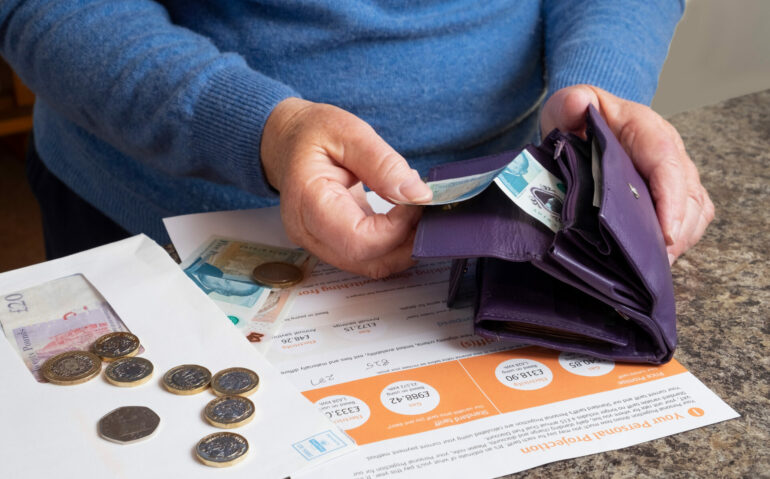Some 42.7% of households are on track for a moderate retirement income – up from 42.1% in 2019, the latest edition of the HL Savings and Resilience Barometer shows.
However, these gains will be short-lived with the percentage expected to plunge to just 38.4% next year.
The PLSA standards say a single person would need a retirement income of £20,800 per year to achieve a moderate standard of living, while a couple would need £30,600.
These figures include the state pension which can be worth up to £9,340 per year per person.
Currently, 71.9% of households in the top income quintile are on track to hit this target.
However, given they are the top earners, a moderate income may not be enough to meet their expectations.
Only 11.7% of those in the lowest income quintile are on track to hit this target.
Helen Morrissey, senior pensions and retirement analyst at Hargreaves Lansdown, said: “We saw a small increase in retirement resilience in this edition of the Barometer with just over 42% of households on track for a moderate retirement income.
“It’s still way too low but it’s a positive sign that auto-enrolment is doing its job. However, the cost-of-living crisis is threatening to derail this progress as projections show this will plunge back down to around 38.4% in the coming 12 months as soaring inflation leaves people with less spare cash and needing to make tough decisions about how they put it to use.
“Saving for retirement through a pension is a hugely important part of financial planning but needs to be balanced with your financial needs today.
“The very mechanism that makes pensions a good bet for retirement planning -leaving the money invested until at least age 55 – means they can’t be accessed to meet short-term needs.
“This may work well most of the time but when you face a cost-of-living crisis, as we currently are, then people are in a very difficult position.
“This leaves pension policy in a tricky spot. Auto-enrolment has got people’s pension planning off to a good start with millions more people taking part in workplace pensions.
“However, as we can see current contributions are not enough to cover a moderate income in retirement – almost 30% of the very highest income households still aren’t saving enough.
“This suggests many have opted to stick close to minimum contribution rates rather than boost them further. Hiking minimum contributions would result in people saving more for their retirement but the trade-off is looking at what happens to their financial resilience today, particularly for lower earners.
“Rather than mandating an increase in minimum contributions more work needs to be done to help people increase them on a voluntary basis as and when they can afford them. The potential to pay more into a pension and get a matching contribution from the employer could be an attractive incentive.
“Such arrangements could be popular as people only increase contributions as they are able to, and employer contribution increases are targeted towards those who value them.
“It’s an approach that should be considered alongside implementing the recommendations of the 2017 Auto-enrolment review – reducing the minimum age to 18 and allowing contributions from the first pound of earnings – as we look at how auto-enrolment can be strengthened.”




